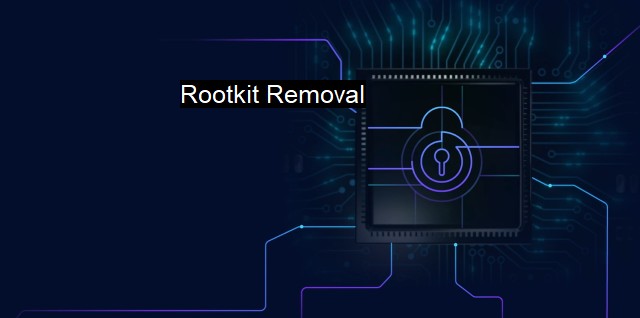What is Rootkit Removal?
Rootkit Removal: Protect Your System from Dangerous Malware
Rootkit removal is an indispensable part of cybersecurity strategy that significantly involves the use of antivirus programs. Rootkits are one of the most dangerous types of malware because they can infiltrate an operating system very deeply and insidiously, thereby making themselves difficult to purge. rootkit removal refers to an array of techniques and procedures utilized to discover and eliminate rootkits from a computer system.Rootkits operate by seizing privileged accessrights to a targeted system allowing the attacker to maintain persistent and undetected control. Once a rootkit is installed it can provide a cyber attacker with the ability to execute files, access log files, monitor activities and alter system configurations. This level of control not only jeopardizes the integrity of data, but places user privacy at great risk as well. The rootkit's scope has expanded from affecting personal computers to invading network servers, shared resource systems, and even cloud-based infrastructure.
The rootkit removal process begins by detecting the rootkit's presence. This can often be a task fraught with difficulty, because rootkits are designed to be invisible to standard system analysis tools, in order to maintain their presence on the system. This stealth mode operation is the defining characteristic of a rootkit, which fundamentally separates it from other forms of computer viruses or malware.
Numerous specific types of antivirus software utilize behavioral-based methods, signature-based recognition methods, or a hybrid of both to detect possible rootkit threats. Behavioral-based methods identify general characteristics of malware, while signature-based methods recognize known values of identified rootkit code or behaviors. An effective rootkit removal tool will, therefore, have a broad recognition capacity, capturing different manifestations of rootki threats.
Once a potential rootkit is flagged, the user or antivirus software can then work to remove it. Some basic solutions may involve updating the system and applications to the latest versions, although this can only tackle rootkits that exploit known vulnerabilities. For sophisticated rootkits, especially those that have installed themselves deep within the kernel of the system, an advanced specialized rootkit removal tool might be necessary.
Quite notably, sometimes the process of rootkit removal could pose risks to the system or data loss. For instance, some deeply entrenched rootkits may cause system failure upon their removal. Cybersecurity experts stronly advize to regularly backup data, to ensure it may be restored if the rootkit removal process leads to compromising the integrity of the data.
Rootkit removal involves the steps for detection, quarantine or deletion, and recovery if and when a rootkit compromises a system. It is of utmost significance in maintaining the health of a system from the cybersecurity standpoint. Timely detection, efficient handling, and successful removal of the rootkits stop the assailant from gaining access to one's personal data and derailing system processes, thus keeping data integrity and system security intact.
To sum up, rootkit removal is a critical process in cybersecurity context. As rootkits continue to evolve, so must techniques for their detection and removal, especially due to their potential to bestow near-total control of a system to an attacker. It thus becomes imperative to regularly conduct system scans and stay updated with the latest definitions to prevent rootkit attacks. Rootkit removal necessitates vigilance and the application of advanced threat detection tools and protocols, often incorporated into robust antivirus software, underlining why it is an ongoing concern, and an ongoing battle, in the sphere of information security and privacy.

Rootkit Removal FAQs
What is a rootkit?
A rootkit is a malicious software that allows cybercriminals to gain remote access to a computer system or network. The rootkit hides its presence and activities from the user and antivirus software, making it difficult to detect and remove.Why is it important to remove a rootkit?
Rootkits can be used to steal sensitive data, such as login credentials, financial information, and personal documents. They can also give cybercriminals full control over your system, allowing them to install more malware or use your computer in a botnet to carry out illegal activities. Removing a rootkit is crucial to protect your privacy, security, and reputation.How can I tell if my computer has a rootkit?
It's not easy to detect a rootkit, as it's designed to remain hidden. However, you may notice some signs, such as sluggish performance, unexplained crashes or freezes, unexpected network activity, or suspicious system files or processes. Running a reputable antivirus program or rootkit detector can help identify any infections.What is the best way to remove a rootkit?
Removing a rootkit can be a complex and challenging process, as it requires deep scanning and analysis of the system files and registry. It's not recommended to attempt DIY rootkit removal, as it can lead to data loss, system instability, or even further infection. The best way to remove a rootkit is to use a professional rootkit removal tool, or seek assistance from a cybersecurity expert who can perform a thorough and safe removal process.| | A | | | B | | | C | | | D | | | E | | | F | | | G | | | H | | | I | | | J | | | K | | | L | | | M | |
| | N | | | O | | | P | | | Q | | | R | | | S | | | T | | | U | | | V | | | W | | | X | | | Y | | | Z | |
| | 1 | | | 2 | | | 3 | | | 4 | | | 7 | | | 8 | | |||||||